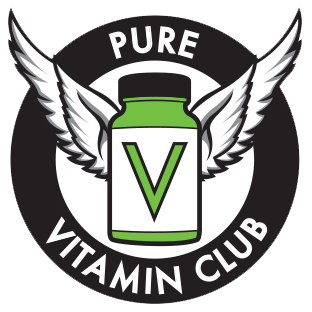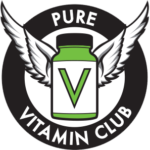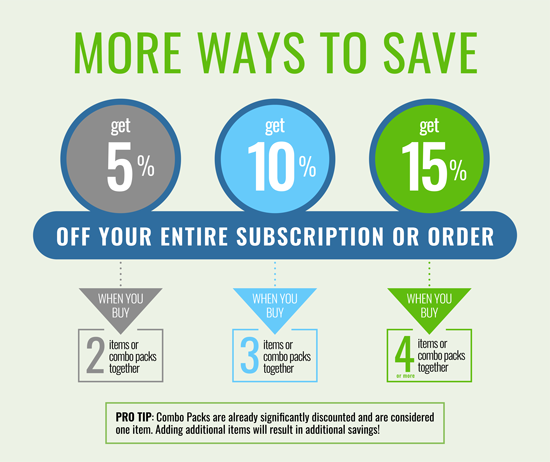Vitamin D & Vitamin K: The Essential Partnership of Essential Vitamins.
Vitamin D is actually a group of compounds, in the family of the fat-soluble vitamins, and one of the so-called “essential vitamins.” It is naturally present in very few foods, is added to others, including dairy and processed foods, and available as a dietary supplement. The number one source of Vitamin D, however, is our own bodies! It is the ONLY vitamin that our bodies can actually manufacture. But more on that later.
What Does Vitamin D Actually Do?
Vitamin D is know primarily for its relevance to our bone health, but the truth is that it does much more than that. First of all, just HOW does it help with our bone health?
- It promotes calcium absorption in the gut
- It maintains adequate serum calcium and phosphate concentrations
- It enables normal mineralization of bone
- It is needed for bone growth and bone remodeling
What Else Does Vitamin D Do?
Although bone health is what people most associate with Vitamin D, it actually does quite a lot for us. Among its other roles in our body are:
- Modulation of cell growth
- Maintains healthy neuromuscular function
- Maintains healthy immune function
- Reduces inflammation
- Stabilizes blood sugar levels
- Works with certain genes that encode proteins to regulate cell proliferation and differentiation
- Vital to maintenance of overall health
Types Of Vitamin D
There are actually several different types of Vitamin D, but only two that are important in humans – Vitamin D2 (ergocalciferol) and Vitamin D3 (cholecalciferol).
One of the key differences between Vitamin D2 and Vitamin D3 is how they are made. Vitamin D3 is the form that occurs naturally in your body. More on this later. In supplementation, it is derived from lanolin, the oil found in sheep’s wool. The way it is derived is very similar to how it is produced in our own bodies.
Vitamin D2, on the other hand, is produced by exposing fungus or yeast to ultraviolet light. This process was developed in the 1920’s, patented, and marketed to pharmaceutical companies.
Historically, Vitamin D2 has been used instead of D3 to treat severe Vitamin D deficiency. To this date, it is the form that many doctors will prescribe. However, research paints a very different picture, and suggests strongly that D3 is by far the preferable form. Among the reasons for this:
- D3 is the type produced by your own body. D2 is always synthetic.
- D3 is 87% more potent in raising Vitamin D concentrations
- D3 is stored in the body 2 – 3 times more effectively than D2
- D3 is converted to its active form in the body 500% faster than D2
- D2 has a shorter shelf life and binds poorly with proteins, further hampering its effectiveness
- Because D3 is absorbed better, you need less of it to be effective.
- In short – the medical community has not 100% caught up to the fact that D3 is by far the better choice for Vitamin D supplementation.
How Does Your Body Get Vitamin D?
The number one source of Vitamin D is not actually anything in our diet. It’s our own bodies, working with the sun. When the ultraviolet rays from sunlight hit our skin, they trigger Vitamin D synthesis.
Our diets don’t actually provide all the much Vitamin D. Some foods, such as milk and packaged orange juice, are “fortified” with Vitamin D. There are also somewhat limited amounts in the following foods:
- Fatty fish (tuna, salmon, mackerel)
- Egg yolks
- Cheese
- Beef liver
- Mushrooms
The Sunshine Vitamin
Sunshine is so crucial to our consumption of Vitamin D, that it’s often referred to as “The Sunshine Vitamin.” Unfortunately, most of us don’t get nearly enough anymore in order for us to get as much Vitamin D through this method as we should. Among people more likely not to get enough from the sun are:
- People who live in colder, darker climates
- People who use a lot of sunscreen
- People who don’t spend much time outdoors
- People who have darker complexions, since darker skin does not absorb sunlight as well
What Is A Vitamin D Deficiency
There are clinically understood measurements for what constitutes a deficiency of Vitamin D. There are also measurements for levels described as “inadequate,” which means not technically deficient, but which can produce some of the same symptoms and risks. Some of the risks of Vitamin D deficiency can be seen in the graphic on this page: osteoporosis, rickets, type 1 diabetes, muscle aches and weakness, high blood pressure, and increased risk for such diseases as Crohn’s Disease, MS, Tuberculosis, and even Cancer.
How Much Vitamin D3 is Enough?
As with almost everything having to do with supplementation, there are a wide range of opinions as to how much Vitamin D is the right amount for supplementation. Also as with most of those variances in opinion, economics are often behind some of the more extreme positions. Vitamin D dosing is no different. The US Institute of Medicine suggests that an average daily intake of 400 – 800 IU of Vitamin D is sufficient for 97.5% of individuals. There are other studies, however, that suggest that the daily intake needs to be higher for people who don’t get much sun exposure.
However, to maintain blood levels of Vitamin D that would be considered “adequate,” that is, greater than 50 nmol/L (nanomoles per Liter), a daily Vitamin D intake of 1,000 – 4,000 IU is more than adequate, and should ensure optimal blood levels.
According to the National Institutes of Health, the “tolerable upper intake level”, or “UL” of Vitamin D, is 4,000 IU. We can all assume that, even with limited sun exposure and poor diet, we will be getting SOME Vitamin D every day, minimally a few hundred IU. So while many over the counter Vitamin D supplements will clock in at 5,000 IU, that is likely too much for most people, and before taking that much, one should definitely consult with a physician.
The Connection Between Vitamin D and Vitamin K
Vitamin supplementation is a complex science. Each of the 13 essential vitamins has very specific functions in the body. As important, however, is how each vitamin interacts with, and in many cases is dependent on, other vitamins in the spectrum in order to be as effective as possible.
As discussed earlier, one of the main functions of Vitamin D3 in our bodies is how it helps us to metabolize calcium in the gut, which is then used to maintain healthy bones. As with most things, however, “too much of a good thing” can become instead a problem, and having too much calcium in our bodies can have serious side effects. Excessive calcium uptake can interfere with normal cardiac and renal function. This condition is called “metastatic calcium.” Vitamin K, and in particular Vitamin K2, activates several important proteins in the body, which help to keep the Vitamin D3 taken in supplementation from creating this “metastatic calcium,” making the D3 that much more effective, as well as considerably safer.
Wait, What Exactly Is Vitamin K?
Like Vitamin D and Vitamin B, Vitamin K is actually a whole complex of vitamins. Like D, K is a fat-soluble vitamin.
The two main types of Vitamin K are K1 (Phytonadione, or Phylloquinone) and K2 (Menaquinone). Further complicating things, there are two main types of Vitamin K2 – MK-4 and MK-7.
What does all of this mean? The bottom line is that each of these different forms of Vitamin K operates slightly differently. They provide different benefits, and are found in different foods. Like with Vitamin B, you wouldn’t want to have just one – to get the full benefit, you want the whole complex.
What Else Does Vitamin K Itself Do?
In addition to its role in the proper use and metabolism of calcium by the body, the chief function of the Vitamin K family is in regulating the body’s blood clotting and coagulation functions. Because of its interaction with Vitamin D3, it also helps to prevent calcification of arteries and other soft tissues.
Vitamin K Deficiency
Symptoms of Vitamin K deficiency include defective clotting, easy bruising, grastroinestinal bleeding, excessive menstrual bleeding, and even blood in the urine. While gross deficiency of Vitamin K is rare in adults, it is so common in children that newborns are routinely given a Vitamin K injection before they’re even sent home. Those most at risk for a vitamin K deficiency include people with chronic malnutrition, those with alcohol dependency, and anyone with health conditions that limit absorption of dietary vitamins.
Interaction Caution
Because of its effects on blood coagulation, persons taking an anticoagulant (Warfarin, etc.) drug should consult with their physicians before taking any Vitamin K supplements.
How Does Your Body Get Vitamin K?
Vitamin K1 is the form of Vitamin K that is most common in foods. It is mainly found in plant-sourced foods, especially dark, leafy green vegetables. Vitamin K2, on the other hand, is only found in animal-sourced foods and fermented plant foods, such as natto. Foods high in K1 include:
- Broccoli
- Kale
- Brussels Sprouts
- Cabbage
Foods that contain Vitamin K2 include:
- Organ meats
- Caviar
- Cheese
The type of Vitamin K that we get by far the most of through our diet is Vitamin K1. By and large, K2 is found only in some fermented foods, and in limited amounts in certain animal products.
While K2 is what is most often talked about in terms of its benefits for blood clotting and for calcium absorption in conjunction with Vitamin D3, both K1 and K2 contribute mightily to these functions. Since Vitamin K2 is so hard to come by in our diets, it’s the form that is most often used in supplements, particularly in Vitamin D + K formulations. However, since very few of us are actually getting all the nutrients we need from our food, due to degradation of our soil, air, and water, poor regular eating habits, and other factors, we are likely not getting enough Vitamin K1 either.
Why MK-4 AND MK-7
Just as Vitamin K1 and Vitamin K2 have different sources and different functions in the body, so do the two TYPES of Vitamin K2, MK-4 (menaquinone 4) and MK-7 (menaquinone 7) work with the body in slightly different ways. Including both forms in a supplement formulation ensures that you are getting the most complete Vitamin K profile possible, gaining the full spectrum of benefits that the Vitamin K family provides.
How to Take Vitamin D and Vitamin K
Because both Vitamin D3 and the entire Vitamin K family are fat-soluble, the best way to take them, from which they will best be absorbed by the body, is in an oil-based delivery system. The easiest and most convenient way to do this is with oil-filled “softgels” – the squishy gelatin capsules. But what actually goes INTO those softgels, aside from the vitamins themselves? First and foremost, of course, is oil – but what KIND of oil? This is in many ways as important as the vitamins themselves.
Most oil-filled softgels use one of a few different oils. One of the most common you’ll see is safflower oil. In higher end products, you may see olive oil, or even “extra virgin olive oil.” You might ask what the problem with that is. The answer to that is – these are inferior products, and will not contribute to your health or to the proper absorption of the vitamins. So why are they used?
They’re CHEAP, REALLY Cheap
And while olive oil is generally good for you….the problem is – the chances that the ‘extra virgin olive oil’ being listed as an ingredient on those supposedly higher end products are ACTUALLY 100%, high quality extra virgin olive oil, are fairly close to zero. The olive oil segment is one of the most corrupt and fraudulent industries in the entire food industry. Standards for labeling are very loose, and even at that, they’re flouted all the time, with companies claiming “extra virgin” status even though their actual oil may contain no more than 50%, or 25%, or even ANY actual extra virgin olive oil at all. What you WON’T see on these vitamin products is anything that identifies WHERE the olive oil they’re supposed to contain comes from.
How Pure Vitamin Club Fixed This Problem
So what makes Pure Vitamin Club’s new Vitamin D3 Plus K Complex different?
First of all, as with all of our products, we use only the finest ingredients possible, in a carefully balanced formulation designed to provide the OPTIMAL dosing, with the maximum benefits, and with absolutely ZERO added fillers, binders, flow agents, sweeteners, or any other added ingredients.
PVC’s first two products were both capsules. While most manufacturers told us creating a capsule without fillers, flow agents, or other junk ingredients was impossible, we persisted, and by so doing, launched a revolution in nutritional supplementation.
Next up was our Sub-Lingual Vitamin B12 Tabs, which posed an even more difficult proposition, as tablets by their very nature require some sort of carrying material, or bulking agent. We solved that problem by using a base ingredient – Calcium Citrate – that was natural, non-toxic, could be tolerated well by everybody, and which actually adds its own nutritional benefit to the formula.
And we did all of this without using any artificial or toxic binders, sweeteners, flavorings, or flow agents.
As discussed earlier, since both Vitamin D3 and Vitamin K are fat-soluble, we needed to find an oil-based solution in order to deliver the product as effectively as possible. We also had to craft the best possible formula. After over a year of research and development, we are extremely proud of what we have come up with
Since we maintain such a strong commitment to the ACTIVE ingredients in our formulas, we also insist on the same high standards for any INACTIVE ingredients we may use. While our capsules contain ZERO inactive ingredients, and we managed to make our Sub-Lingual Vitamin B-12 Tabs with a base material that DOUBLED as an active ingredient, there’s no way to deliver an oil-filled softgel without using that one important inactive ingredient – OIL! So we set about making sure we used the best oil available, with the most health benefits, and that would contribute best to proper absorption of the vitamins inside. We’re therefore very proud to announce that we have made an EXCLUSIVE agreement with Villa Cappelli®, which produces the finest Extra Virgin Olive Oil there is, and bring it in direct from Puglia, Italy.
What’s In The Pure Vitamin Club Formula?
- Only Vitamin D3 (Cholecalciferol)
- The OPTIMUM dosage – 2,000 IU
- The FULL Vitamin K Complex – Vitamin K1 (200 mcg) PLUS Vitamin K2 (180 mcg)
- BOTH forms of K2 – MK-4 and MK-7
- The ONLY trademarked and licensed version of MK-7 on the market,
- The ONLY softgel to use exclusively VILLA CAPPELLI® Extra Virgin Olive Oil
- No extra ingredients whatsoever
- No artificial colors. We don’t care what color our vitamins are, as long as they’re pure and they work – and neither should you. So these are exactly the color the ingredients are.
To try out the optimized Vitamin D+K Formula from Pure Vitamin Club, Click Here




